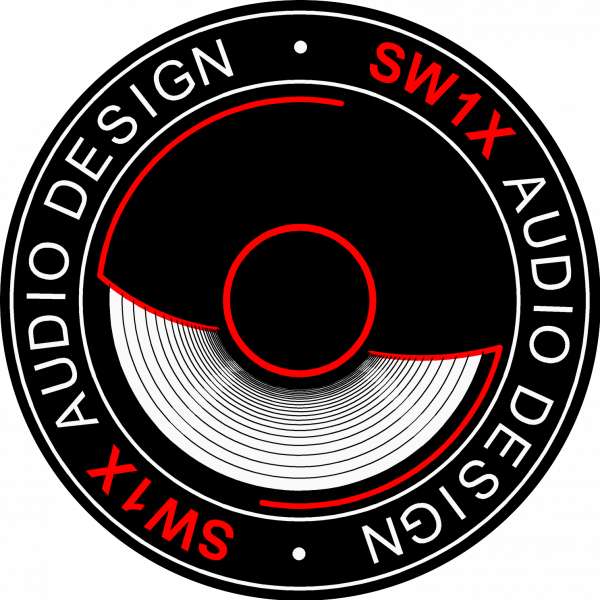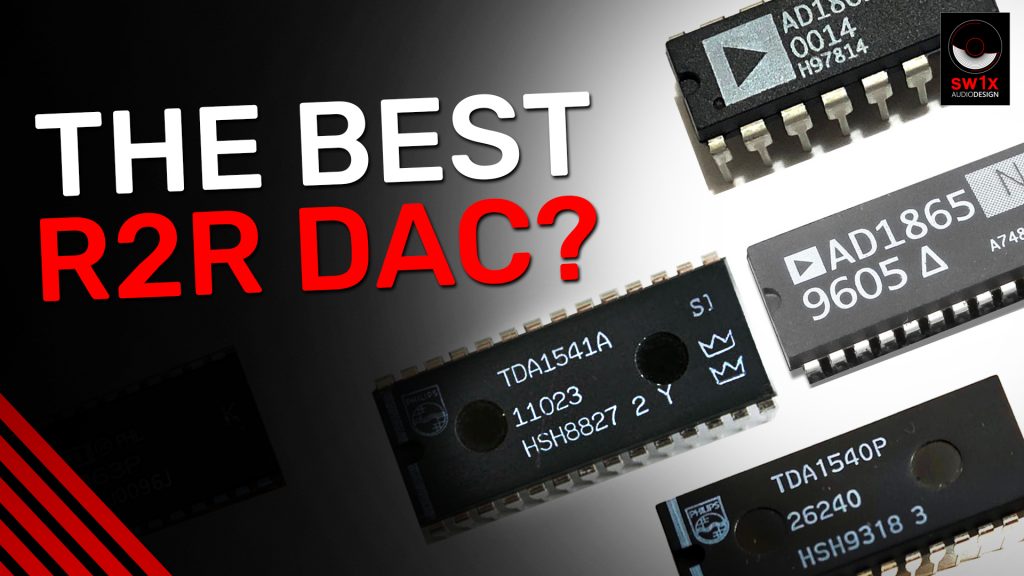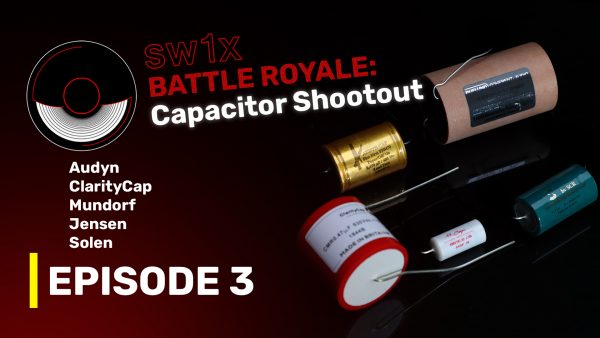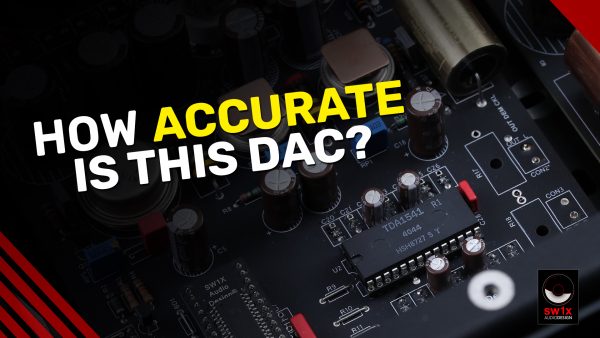Top 5 R2R DACs 2025
1
00:00:00,160 –> 00:00:07,680
ideal DACs only exist in our minds. Um nothing
is perfect in this in this world but the idea
2
00:00:07,680 –> 00:00:14,800
existed in my mind basically that the
most uh complete ideal sounding DAC is
3
00:00:14,800 –> 00:00:19,840
the analog a DAC approximates the analog the
outcome should be exactly the same whether I
4
00:00:19,840 –> 00:00:24,560
played through tape through vinyl the the
sound is organic natural in the early very
5
00:00:24,560 –> 00:00:28,800
early days when I first got my experience
with digital it wasn’t like that at all
6
00:00:28,800 –> 00:00:35,360
my experience with CDs and it all sounded
artificial sterile, not natural, far from
7
00:00:35,360 –> 00:00:45,120
it. There’s a huge wide gap between analog and
digital, especially when I first got to know it.
8
00:00:45,120 –> 00:00:52,400
I’ve been trying different s sort of DACs. There
is. And one thing that really opened my eyes is
9
00:00:52,400 –> 00:01:03,360
was a DAC that was based on TDA 1543. First time
I heard a TDA 1543 in uh non-overs sampling mode,
10
00:01:03,360 –> 00:01:09,440
so without digital filters applied. I think
this were either four or eight TDA 1543s in
11
00:01:09,440 –> 00:01:17,120
parallel and they had no output stage. They
were just paralleled and that would as pure
12
00:01:17,120 –> 00:01:22,640
a DAC could be basically. Once I connected
this DAC and I listened through my headphones,
13
00:01:22,640 –> 00:01:29,520
I thought immediately the sound. Yeah. Though it
was not most refined sound there is, the sound
14
00:01:29,520 –> 00:01:36,240
was very much akin to playback character that
I’m I was used to when I was playing back tape
15
00:01:36,240 –> 00:01:43,120
and vinyl. It sounded so much more liquid and
lucid and so much more natural. And I thought,
16
00:01:43,120 –> 00:01:51,280
what’s the uh what what’s the secret? Why this DAC
all of a sudden sounded so much more analog than
17
00:01:51,280 –> 00:01:58,960
all these higher specified this higher spec 24bit
and whatever we had at that time. Why is it such a
18
00:01:58,960 –> 00:02:05,040
such a dramatic difference? Well, first I thought
that this is the absence of the digital filter and
19
00:02:05,040 –> 00:02:12,080
later I also understood that everything around
that DAC including that DAC makes this DAC sing.
20
00:02:12,080 –> 00:02:17,440
All this power supplies, inputs, outputs,
the materials around that, the execution,
21
00:02:17,440 –> 00:02:23,600
the implementation of that DAC matter so much more
than the DAC itself. Okay, so the DAC itself is
22
00:02:23,600 –> 00:02:28,880
just a starting point. You know, with this idea in
mind, started buying all the CD players, looking
23
00:02:28,880 –> 00:02:35,520
at them, how they sound, uh disabling digital
filters and understanding what affects those DACs
24
00:02:35,520 –> 00:02:42,400
to sing the way they sing. So that in mind in a
very controlled environment I tried different DACs
25
00:02:42,400 –> 00:02:48,640
and you try different DAC and the list included I
mean tried a lot of DACs including all these noise
26
00:02:48,640 –> 00:03:03,920
shaping by ESS and by ATM very old DACs like TD
1540 TD 1541 PCM 58 PCM 56 PCM 63 the AD um 1862
27
00:03:03,920 –> 00:03:13,360
and 64 and 65 five. Uh they were all tried. So
most of these DACs that were available back in the
28
00:03:13,360 –> 00:03:25,040
days, they’ve been listened to and tried out to
see what character and the presentation they have.
29
00:03:25,040 –> 00:03:32,800
Out of this uh large list of these uh DACs,
the noise shaping DACs didn’t make our list
30
00:03:32,800 –> 00:03:40,160
for obvious reasons. They’re just too noisy. They
sound too artificial. They don’t have the depth,
31
00:03:40,160 –> 00:03:45,680
the holography, the natural timbers. There’s
always some noise in between. They’re never
32
00:03:45,680 –> 00:03:50,480
clean sounding. They have, no matter what power
supplies you’re going to use, they are like class
33
00:03:50,480 –> 00:03:57,520
D amplifiers. And uh R2R digital filterless.
It’s like class A, which is very clean, very,
34
00:03:57,520 –> 00:04:03,200
very quiet and natural uh sounding. And then you
have the noise shaping type, which is class D.
35
00:04:03,200 –> 00:04:08,160
essentially it wasn’t wasn’t part of the design
I would like to pursue because in early stages
36
00:04:08,160 –> 00:04:13,120
I understand the digital filter does a lot
of harm not something that I would love to
37
00:04:13,120 –> 00:04:18,400
uh uh to offer a product a great analog
musical sounding product would never make
38
00:04:18,400 –> 00:04:25,600
uh to our uh list what remained is basically
the bur brown analog devices and Philips with
39
00:04:25,600 –> 00:04:34,800
the choice what we had between 24bit being the
highest R2R and 16 bit or 14 bit 14 bit TDA 1540
40
00:04:34,800 –> 00:04:43,920
the lowest somehow I always preferred the lower
bit variance. So having more bits somehow never
41
00:04:43,920 –> 00:04:49,120
translated to more musicality. As a matter of
fact, it was always the opposite. For example,
42
00:04:49,120 –> 00:04:58,720
the more modern PCM 1702 or 1704 which is 24bit
was significantly worse sounding than the PCM 63
43
00:04:58,720 –> 00:05:07,600
which is 20 bit. And I preferred the PCM 56 over
PCM 58 and PCM 63 for its elegant simplicity and
44
00:05:07,600 –> 00:05:17,280
what makes the PCM uh 56, 58 and 63 so beautiful
sounding and rich and wealth and detail despite
45
00:05:17,280 –> 00:05:24,000
the limited bit depth uh according to their
specs is the use of nickel chromium resistors
46
00:05:24,000 –> 00:05:31,280
inside inside those DACs. So we in the end we
ended up not with PCM 6 uh 63 or 58 which is
47
00:05:31,280 –> 00:05:38,960
now very rare and very difficult to find. uh
we ended up in the PCM56 that was my favorite
48
00:05:38,960 –> 00:05:50,160
um of everything that was there in terms of uh
Philips so TDA 1540 41 and 43 I think the 43 had
49
00:05:50,160 –> 00:05:56,560
already a reputation to be the the godfather of
all the digital filterless non-oversampling world
50
00:05:56,560 –> 00:06:04,880
it has a very huge following and lot of fans know
that TD543 is still like one of those Super DACs.
51
00:06:04,880 –> 00:06:14,320
The other DAC uh manufacturer that stood out and I
really liked the analog devices to AD AD 1865 very
52
00:06:14,320 –> 00:06:22,480
well-known 18bit R2R DAC. Unfortunately did make
didn’t make my list despite my initial liking. I
53
00:06:22,480 –> 00:06:28,720
uh I listened to this DAC but never really like
it the way the top end sounded on this one and the
54
00:06:28,720 –> 00:06:35,440
presentation. It was never as musical as to all
the Philips offering and it was never as natural
55
00:06:35,440 –> 00:06:41,360
sounding especially in the uh upper registers.
It’s always tended to sound more synthetic. So
56
00:06:41,360 –> 00:06:49,120
some sort of synthesizer sound synthetic top end
on the AD1865 uh prevented us to go actually and
57
00:06:49,120 –> 00:06:56,880
employing this DAC in our designs. So the the
AD1865 uh in my book is not as on the same level
58
00:06:56,880 –> 00:07:08,720
as say a TDA540 or TDA 1541 which are way more
analog and natural and organic sounding DACs.
59
00:07:08,720 –> 00:07:18,240
So basically my top R2R DACs became the ones from
uh Bur Brown though uh PCM 58 and PCM 56. So 16
60
00:07:18,240 –> 00:07:31,440
18 bit variants and the the Philips TDA 1543
1540 and 41. In terms of my personal favorite
61
00:07:31,440 –> 00:07:40,480
uh DACs of all time, I think it’s TDA 1540 and 41.
The qualities of TDA 1540 are very much akin to
62
00:07:40,480 –> 00:07:49,920
the TDA 1543. It’s an extremely musical sounding
DAC, very analog and musical. The problem is that
63
00:07:49,920 –> 00:07:56,720
TDA540 it’s much more difficult to be made to
work a standalone DAC. The interface was never
64
00:07:56,720 –> 00:08:05,040
I2S. So we couldn’t use it as separate device
and it needed its own um programming FGPA um
65
00:08:05,040 –> 00:08:13,120
interface in order to accept the incoming digital
uh formats and therefore the 43 and 41s became
66
00:08:13,120 –> 00:08:20,080
integral part of our DAC range. The 43 being like
stripped down version. It’s not the 41 or 40,
67
00:08:20,080 –> 00:08:26,400
but it is a very musical sounding DAC and
anybody who wants to start their journey into
68
00:08:26,400 –> 00:08:35,040
analog sounding DAC range TD 1543 basically our
DAC one is the entry ticket into this world. Top
69
00:08:35,040 –> 00:08:41,120
two. Number two would be my PCM56. The beauty
of the PCM 56 is that it uses nickel chromium
70
00:08:41,120 –> 00:08:49,600
resistors edged inside that DAC chip. PCM56 is a
16- bit version uh similar offering to Philips and
71
00:08:49,600 –> 00:08:58,720
number one would be TDA 154140 but I would say
TDA541 for its more versatility. Those designs
72
00:08:58,720 –> 00:09:04,880
that we have right now in our portfolio we have
experimented at least a decade on them already.
73
00:09:04,880 –> 00:09:10,160
So that reinforces the notion that we don’t follow
any sort of trends. We just choose a technology
74
00:09:10,160 –> 00:09:17,600
that we feel does the best and then we stay with
it and we polish it until we approach that feeling
75
00:09:17,600 –> 00:09:25,440
that everything is analog and the only way to
discover the world is by trying and experimenting.
76
00:09:25,440 –> 00:09:34,480
One can’t theoretically get something if
one have hasn’t experienced it before.




